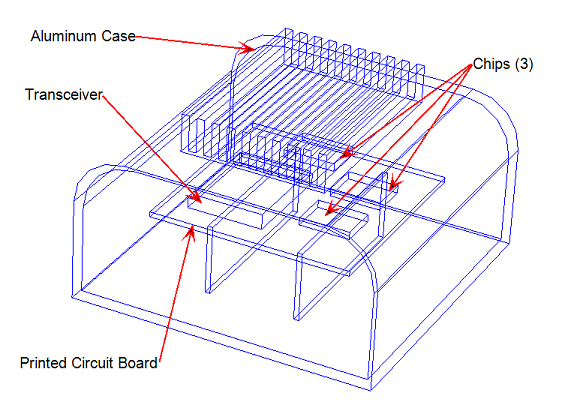Tutorial: Natural Convection around a Telecommunications Module
In this tutorial, we simulate the air flow and temperature distribution due to natural convection in and around a sealed telecommunications module.

The aluminum enclosure contains several heat-generating components. The flow around the module is driven by gravity and density variations caused by gradients in the air temperature. (This is also known as buoyancy.) Fins on the exterior of the enclosure dissipate heat to the surrounding air.
After opening the module geometry in Autodesk® CFD, we construct a large air environment using the External Volume Geometry Tool. Because the device is in an open environment, we assign flow conditions to the top and bottom surfaces of the box. We also assign an ambient temperature to the lower opening.
Key Topics
- External natural convection using the "chimney" approach
- Creation of an external flow volume with the Geometry Tools
- Incompressible, turbulent, steady state flow
- Buoyancy-driven flow
- Total heat generation boundary condition
- Surface parts to simulate an adhesive layer between components
- Compact Thermal Model material type
- Printed circuit board material type and property calculator
Goals
- Understand the flow and temperature profiles in and around the device.
- Determine the temperature on critical components using Results parts
